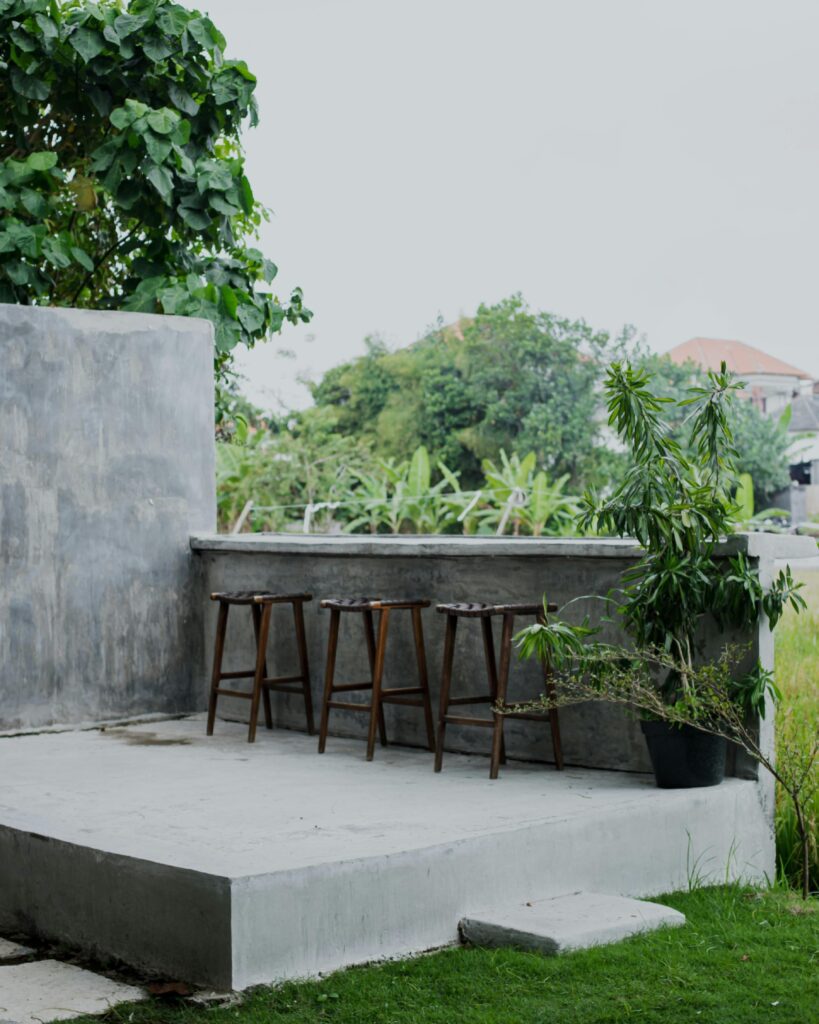
Choosing the Right Concrete Finish for Your Patio – A Comprehensive Guide
Concrete patios offer homeowners a practical, versatile option to transform their outdoor spaces. However, choosing the right concrete finish is essential to achieving both a functional and aesthetic result.
The right choice is influenced by climate, maintenance requirements and design preferences. To help you decide between a broom finish, stamped concrete, exposed aggregate and stained concrete, here is a comprehensive comparison of their characteristics and advantages.
1. Stamped Concrete
Stamped concrete is a popular choice for patios, walkways and driveways. It is a less expensive alternative to materials like flagstone and pavers. It also offers greater flexibility in terms of color and pattern.
To create a stamped look, contractors use large stamps that imitate the desired decorative finish. They then apply a liquid release agent to the concrete and press it into the surface. To prevent the impression from becoming uneven, contractors should precondition, or coat, the stamp mats with the release agent before using them on concrete.
While stamped concrete is relatively durable, it can crack, just like a plain slab of concrete. However, hairline cracks in decorative concrete are usually easy to repair and don’t detract from the overall beauty of the patio.
Unlike stone or brick options, stamped concrete is a fast installation process that doesn’t require the labor-intensive preparation and installation of mortar. This makes it an attractive option for homeowners who are on a tight budget but want to add value and curb appeal to their property. follow the link for more: http://www.clevelandcement.com/
2. Broom Finish
Concrete is hard-wearing and versatile, able to be used in a wide variety of landscaping designs. Choosing the right finish for your patio will help ensure that your investment looks beautiful and holds up well over time.
Broom finish is a popular choice for homeowners and businesses, and it’s easy to see why. Also known as brushed concrete, this type of surface features small ridges left by stiff broom bristles that make the concrete slip resistant. This safety feature is important, as unfinished concrete can be dangerously slippery when wet.
Contractors use a magnesium float to smooth the concrete surface prior to broom finishing, and they must be careful not to over-work the concrete. The timing window for imprinting a broom texture is small, and it takes practice to get it right.
Once mastered, broom finishing is an attractive and cost-effective way to give a plain slab some character and visual appeal. In the hands of an experienced contractor, variations in angle, pressure, direction, and spacing of the brush strokes can create patterns and borders that turn your concrete into a unique landscape element.
3. Smooth Finish
Concrete is a versatile material that can be used in a variety of ways to achieve a unique look. It can be stamped or imprinted with decorative patterns and textures to resemble other materials, such as slate, wood, bricks, or flagstones. It is also durable and can withstand heavy traffic.
Using a trowel to create a smooth surface for your patio can make it look modern and elegant. You can also use a trowel to create other kinds of textures, such as swirls or arcs. This type of finish is easy to clean and maintain, and it can reflect light, which can brighten up a space.
A brushed finish is good for outdoor concrete applications because it provides traction and slip resistance. This makes it ideal for areas that may get wet or icy. This finish can also be stained to add color and visual interest. It’s important to choose the right finish for your patio based on its intended use and your aesthetic preferences.
4. Trowel Finish
Trowel finish is a popular choice for patios because it can be created to look like a variety of materials, including stone, tile, brick and flagstone. It also has the added benefit of being more affordable than these materials.
A trowel finish can be achieved by hand or with a power trowel. The process is time-consuming and requires careful attention to detail. It’s important to make sure that the concrete is in the right condition for troweling – it needs to be firm, dry and clear of debris. It’s also necessary to understand how the machine works, including how to adjust the pressure and angle of the blade.
Power troweling is typically done in a number of passes, starting with the float pass, where the blade is held flat to create suction against the concrete. As the concrete hardens, the tilt and angle of the blade are gradually increased to achieve a dense, smooth surface.